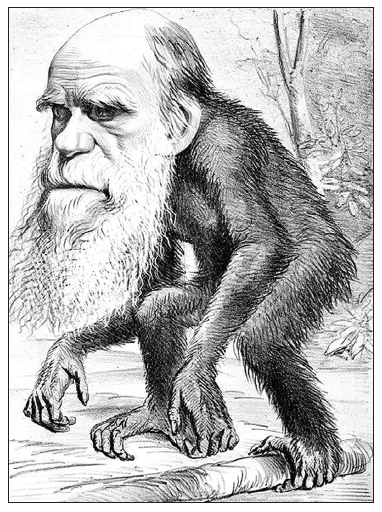
A Victorian era
cartoon published in
The Hornet, the satirical
English magazine in
which Charles Darwin was
famously portrayed as “a
venerable orang-outang.” Courtesy of http://www.aidanhiggins.com/images/chimps.jpg
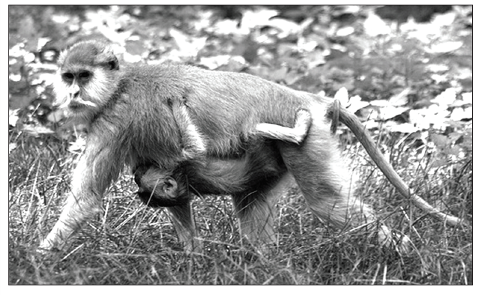
This infant patas monkey instinctively clings to its mother’s fur, where it will ride upside-down for the first several months of its life. Photo by Richard Dutton, richard@dutton.me.uk. Reprinted with permission.
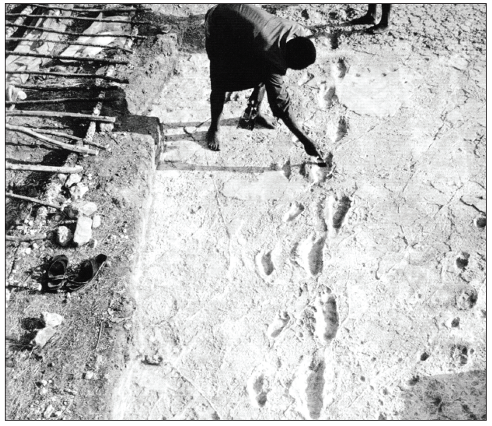
The Laetoli footprints furnished indisputable evidence that
early hominids were fully bipedal and have been walking on two legs for
millions of years. © 2015 John Reader. Reprinted with permission.
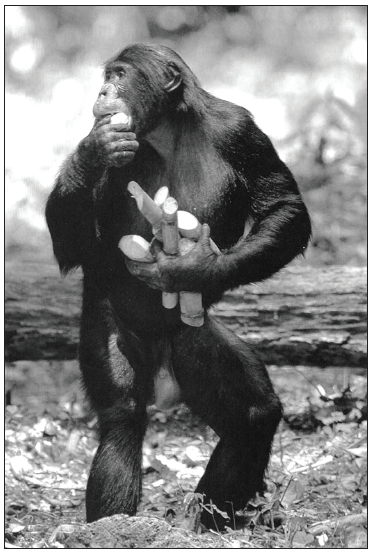
The bonobo,
our closest primate relative,
can stand and walk upright
when carrying things with
its forearms. But its bent
knees reveal that its legs are
designed for quadrupedal
locomotion. © Frans Lanting/
www.lanting.com. Reprinted
with permission.
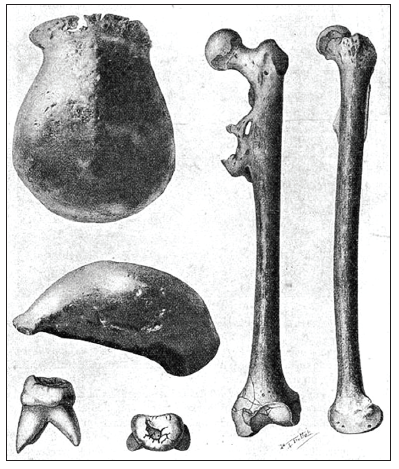
Homo erectus fossils collected by
Eugène Dubois in Java. These were the first
fossils discovered of the emerging human
Homo erectus, which Dubois dubbed “Java
Man.” Wikimedia Commons.
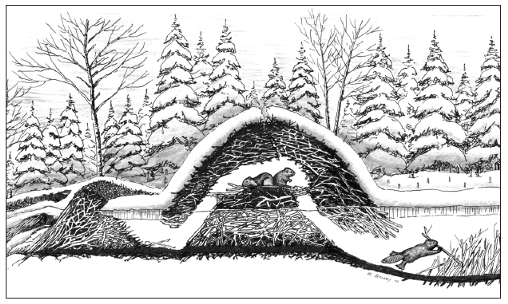
A beaver lodge in winter. Although its brain is only slightly
larger than a walnut, the beaver constructs a complex dwelling, complete
with cleverly concealed entrances and breathing holes. Illustration by Mike
Storey. Reprinted with permission.
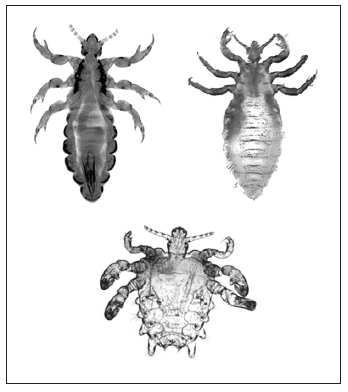
The three types
of lice that infest the human
body. Top left: the human body
louse; top right: the human
head louse; bottom: the human
pubic louse. Human head louse:
Creative Commons Attribution-
ShareAlike 3.0 files; human
body louse and pubic louse:
courtesy CDC DPDx—Centers
for Disease Control—Laboratory
Identification of Parasitic Diseases.
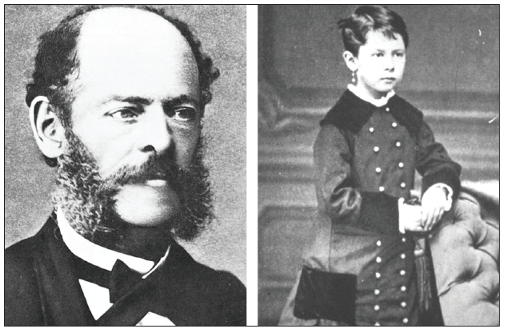
Marcelino Sanz de Sautuola and his daughter Maria, who
together discovered one of the world’s largest and finest collections of
prehistoric art, in Altamira Cave, Spain. Maria Sanz de Sautuola: Santander
Prehistory Museum.
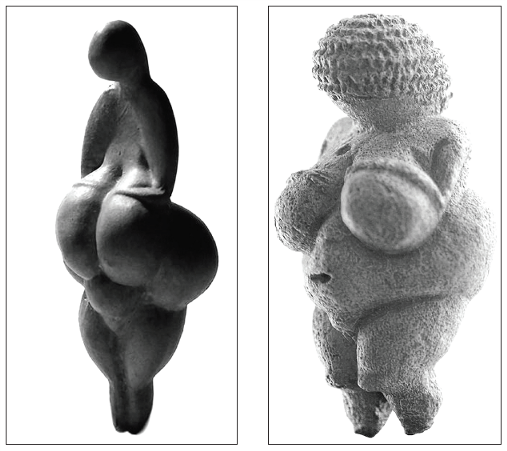
The Venus of Lespegue from France (left) and the
Venus of Willendorf from Austria (right) date from the same time period,
yet their artistic styles reflect the distinct cultures of these two different
Paleolithic societies. Venus of Willendorf photo by Matthias Kabel, Creative
Commons.
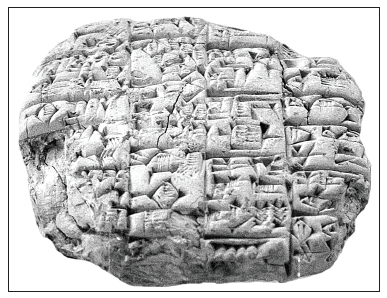
This cuneiform
letter, written with a
wedge-shaped stylus in soft
clay, was sent to the king
of the Mesopotamian city
of Lagash, informing him
of the death of his son in
combat.
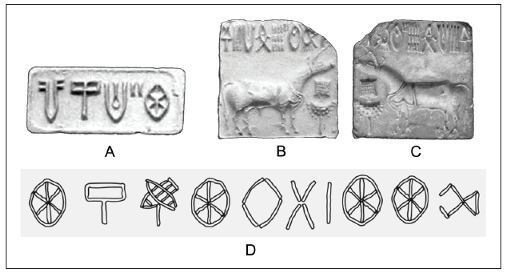
Writing began in the Indus Valley with symbols carved onto
clay seals (A) often combined with imagery (B) and stamped onto soft
clay or wax (C). The use of repeated symbols (D) is evidence that the
Indus script was a true written language. A, B, and C: permissions granted
by GNU Free Documentation License 1.2; D: permission granted by GNU Free
Documentation License 1.2 and the Creative Commons Attribution-Share Alike
3.0 Unported License.
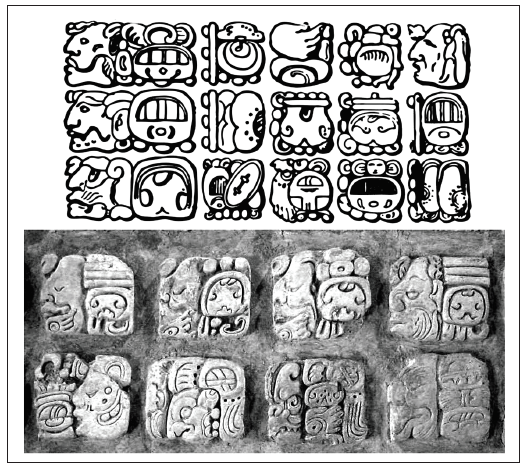
The extremely complex hieroglyphics of Mayan
civilization were written on panels of flattened bark (top) and
also carved into the facades of stone temples (bottom).
Bottom: Creative Commons Attribution Share-Alike 3.0 License.
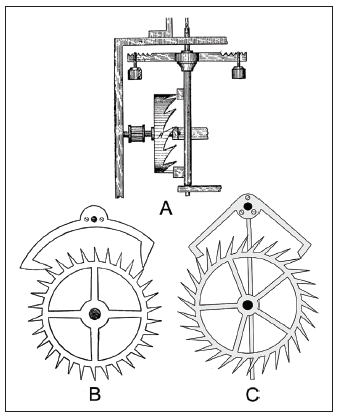
The “verge and foliot” escapement (A) was used for 350 years, but was eventually replaced by the pendulum and the more accurate “anchor” and “deadbeat” escapements (B) and (C). A: De Vick clock verge & foliot by Pierre Dubois, licensed under public domain via Wikimedia Commons; B: anchor escapement by George Henry Abbott Hazlitt; licensed under public domain via Wikimedia Commons; C: deadbeat escapement by Frederick J. Britten; licensed under public domain via Wikimedia Commons.

A wood-fired blast
furnace of the type commonly
used in sixteenth-century
Europe.

The UNIVAC Model 1103, designed for making scientific
calculations, was announced by the Remington Rand Corporation in
February of 1953.

Ice cores from Antarctica’s Vostok Research Station show that high
concentrations of atmospheric carbon dioxide have been closely associated with
increased global temperatures during the past four hundred thousand years.
Illustration by the author, after Vostok Petit data. Licensed under Creative
Commons Attribution-Share Alike 3.0 via Wikimedia Commons.
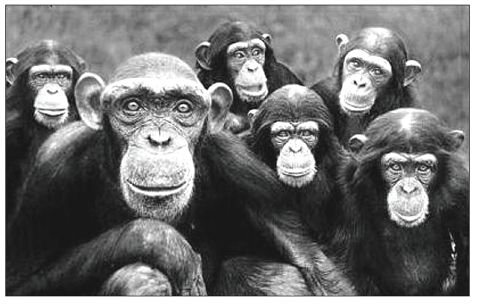
The body language of these chimpanzees reflects the solidarity
and familiarity they feel as members of the same social group.
Courtesy of http://www.aidanhiggins.com/images/chimps.jpg
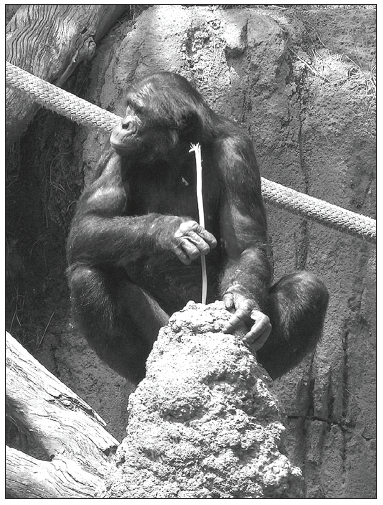
The discovery
that chimpanzees
make and use tools
revolutionized scientific
thinking about the
origins of tool use. This
chimpanzee is using a stick
for fishing termites out of
their nest.
Photo by Mike Richey.
Reprinted under the Creative
Commons Attribution-ShareAlike
3.0 Unported
License.
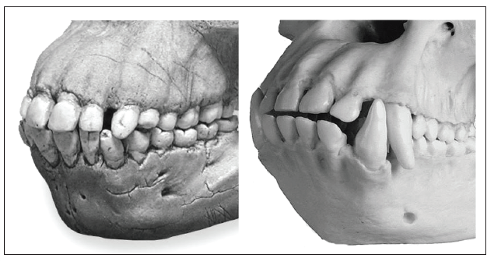
Compare the blunt, stubby canine teeth of the early hominid
Australopithecus afarensis (left) with the weapons-grade canines of our
closest relative, the common chimpanzee (right). Left: © 2014 Skullduggery,
Inc. Reprinted with permission; right: © 2014 Science Outreach, University of
Canterbury, Christchurch, New Zealand. Reprinted with permission.
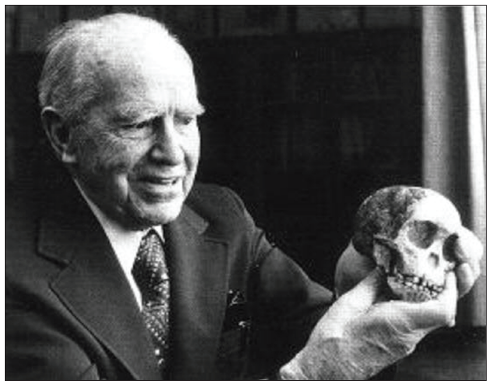
Professor Raymond Dart with the “Taung Child”—the first
fossil of Australopithecus ever found. Wikimedia Commons.
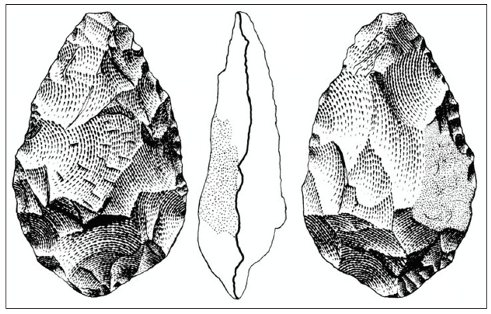
The iconic Acheulean hand ax, made by emerging humans for
hundreds of thousands of years. Its manufacture required the selection of a
suitable stone and the mastery of a multistep process. Wikimedia Commons.
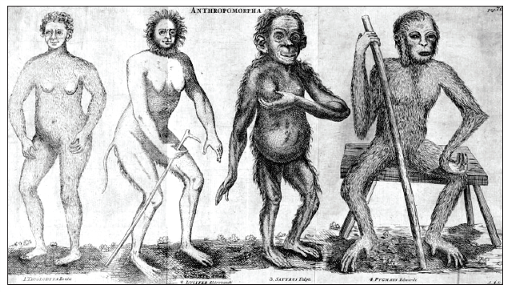
The forms of the various species of humans that were once
believed to exist, as they were depicted in Carolus Linnaeus’s Systema
Naturae. Wikimedia Commons.
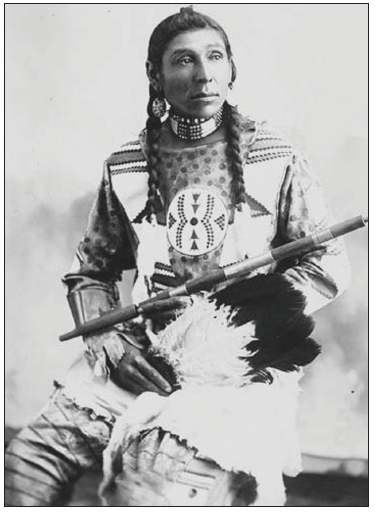
The son of
a Plains Cree chief in
traditional ceremonial
dress. Note the tailored
clothing that covers almost
the entire body of this
hunter-gatherer from the
North American Plains.
Geraldine Moodie / Library
and Archives Canada.
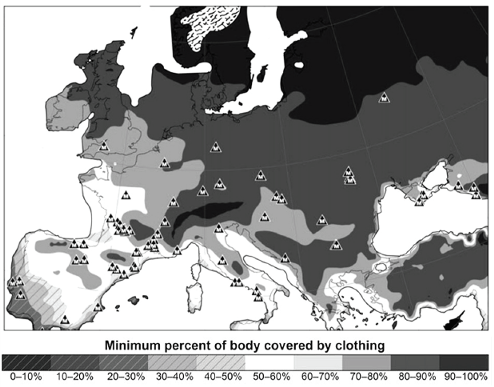
Map of Europe showing the minimum percent of the body that
the Neandertals must have covered with clothing in order to survive in Europe
between 70,000 and 50,000 years ago. Reprinted from Journal of Human
Evolution, vol. 63, no. 6, Nathan Wales, Modeling Neanderthal clothing using
ethnographic analogues, page no.786, copyright 2012, with permission from Elsevier.
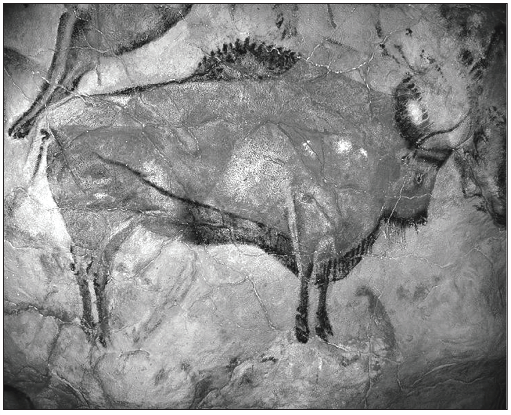
A painting of extinct bison found by Maria de Sautuola in
Altamira Cave. Originally rejected by paleontologists, these paintings are
now among the most treasured examples of prehistoric art. Wikimedia
Commons.
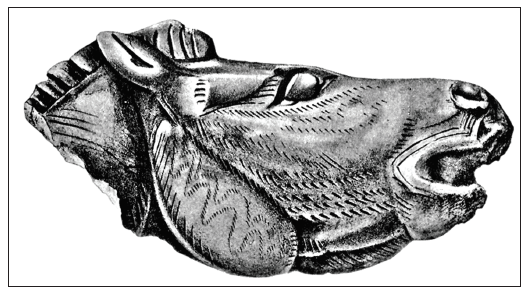
This horse’s head, carved from a section of
reindeer antler, is fifteen thousand years old. It shows the
prehistoric artists’ consummate skill in rendering the likeness
of animals. Wikimedia Commons.
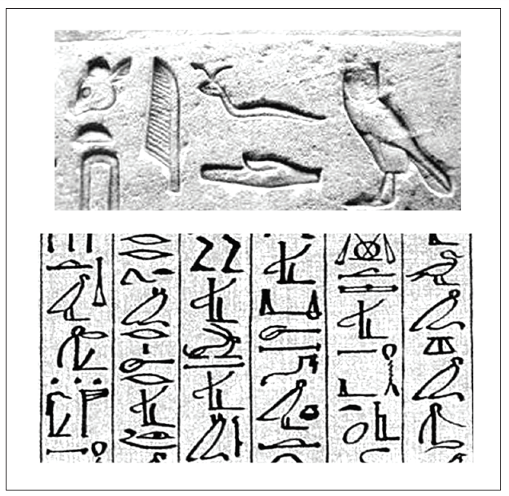
Egyptian hieroglyphics were carved in stone (top) and also
written in a more simplified “cursive” form on sheets of papyrus (bottom). Permission granted by GNU Free Documentation License 1.2 and the
Creative Commons Attribution-Share Alike 3.0 Unported License.
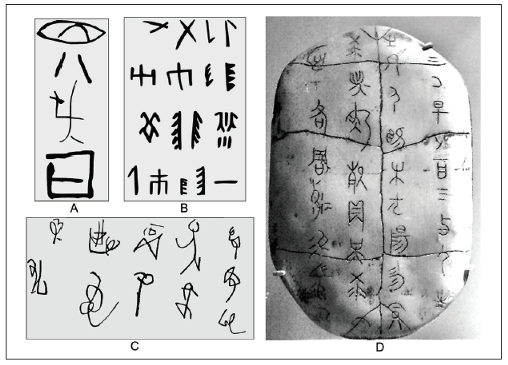
Forms of early writing in China, from (A) Jiahu, 6600 BC,
(B) Dadiwan, 5800 BC, (C) Longshan, 3000 BC, and (D) the “oracle
bone writing” of the Shang dynasty, 1200 BC. C: redrawn by Tomchen in
1989; D: replica of oracle turtle shell with ancient Chinese oracle scripts; licensed
under Creative Commons Attribution-Share Alike 3.0 via Wikimedia Commons.
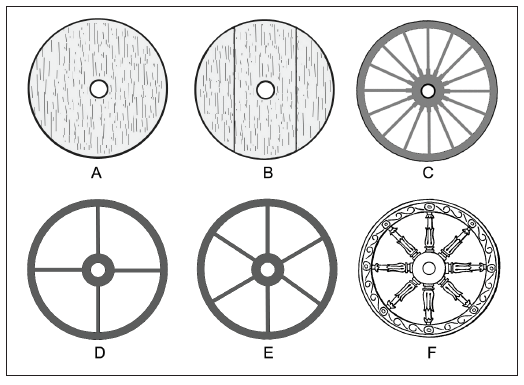
The wheel evolved from solid pieces of wood
(A) to a three-piece design (B) that ultimately evolved into
the multispoked wheel (C). Chariots had four- and sixspoked
wheels (D and E). Decorated wheels (F) were used for
ceremonial occasions. A–E: illustrations by the author; F: after
chariot, image 16657, Florida Center for Instructional Technology.
Reprinted with permission.
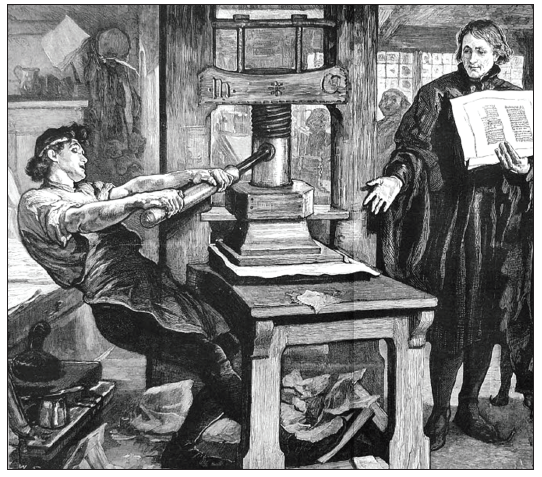
The screw press had been used since ancient
times, but precision machining made it possible for Johannes
Gutenberg and others to adapt the screw press for the task
of printing on paper. William Caxton showing specimens of his
printing to King Edward IV and his Queen. Licensed under public
domain via Wikimedia Commons.

Charles Babbage’s “difference engine” was the most advanced
calculating machine of its time. This version, designed in 1849, was built
at the London Science Museum in 1989. Permission granted by GNU Free
Documentation License 1.2 and the Creative Commons Attribution-Share Alike
3.0 Unported License.

Biosphere 2 was intended to demonstrate how humans
could live on other planets, but instead it showed that life cannot be
sustained once contact with the earth’s natural ecosystems is severed. Wiki
bio2 sunset 001 by Johndedios. Licensed under Creative Commons Attribution
3.0 via Wikimedia Commons.
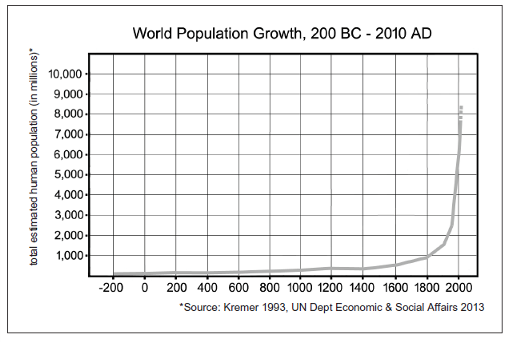
The global population of human hunters and gatherers stood at
roughly five million people in 5000 BC and grew to 150 million over the next
five thousand years. But when the industrial revolution began in 1800, the
human population exploded, increasing from less than one billion to more than
six billion people in slightly more than two hundred years.
